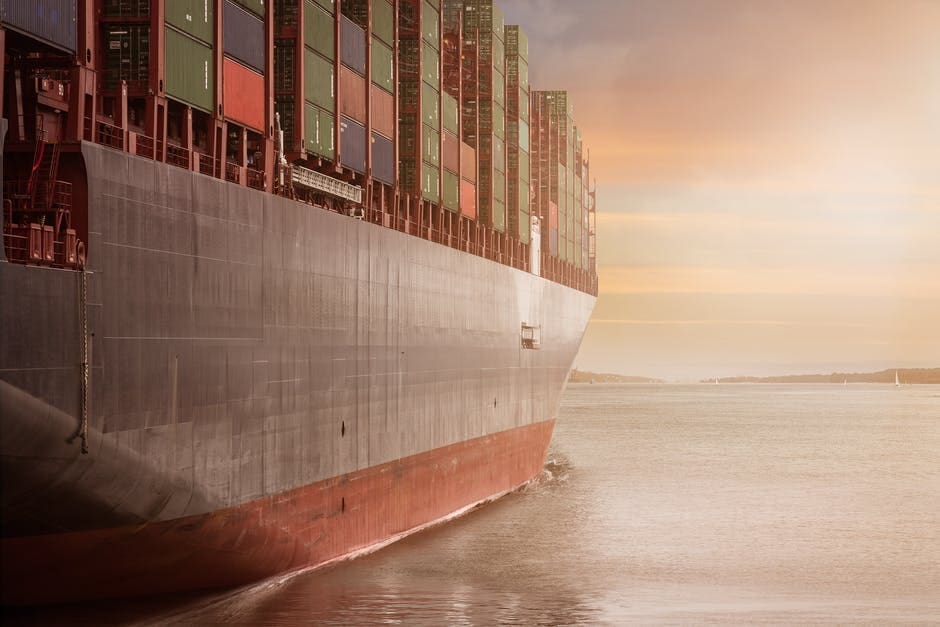Your Guide to Metal Shipping Container Capacity

Maritime transportation is the backbone of global trade. Over 800 million containers are handled by ports worldwide per year. That accounts for a massive portion of the worldwide shipping market.
As the most basic explanation, a shipping container is a box that holds cargo and transports it from one area to another. But, there is a wide variety of shipping containers, from massive reusable steel boxes used for intermodal shipping to standard corrugated boxes.
Sometimes it’s hard to know which is best for your shipping needs, and as shipping container usage is on the rise, you may find more of them in your city than in the ports you would expect to find them.
The brilliance of these containers is that they must standardize in the same way that Lego blocks are. In this manner, they may be readily piled on top of one another and transferred fluidly using road, rail, and marine transportation.
Yet, you’ll still need to know about shipping container capacity to make an informed (and wallet-saving) decision. Read on to find out more.
Shipping Container Dimensions
Various container sizes are developed and utilized to transport diverse commodities and meet the demand for cargo carried from one port to another. We’ve gathered a list of all the measurements of shipping containers for you to browse through.
8 Foot Shipping Containers
It is the smallest container category available on the market. These containers contain a volume of 10 cubic meters (353 cubic feet) and are primarily used to transport personal objects such as office equipment, house furnishings, etc.
They are relatively simple to carry with a forklift and are often used as storage units too. They are incredibly portable and easy to manage since they load into larger capacity containers to save space and money.
10 Foot Shipping Containers
The 10ft model is suitable for fitting into smaller spaces while being heavy enough to handle most mid-commercial storage and transportation needs. They are a good alternative for on-site storage since they are highly safe and locked with a lock.
They are very transportable, and while they are utilized less frequently than their 20 and 40-foot variants, they are widely employed for personal purposes.
20 Foot Shipping containers
Today, forty or twenty-foot standard length containers account for between 80 and 90% of all containers moved worldwide. So, these shipping container dimensions are one of the most regularly used metal boxes for storing and shipping commodities.
They are utilized in various industries, including hotels, agriculture, and retail. They are a popular container choice because of their extendable storage and durability.
These containers contain solid steel, are waterproof, and are easy to reach. They can quickly transform into adapted items like dwellings, hotels, and many more.
40 Foot Shipping Containers
In ordinary transport boxes, 40-foot containers are the most significant size available. They are also often used for storing and transporting larger products in the global market.
Because they are double the size of their 20-foot counterpart, they can transport significantly more freight at once and are also a more cost-effective alternative if shipping in bulk. These containers are perfect for extensive open areas and can be utilized for additional industrial storage purposes.
45 Foot High Cube Shipping Containers
The 45-foot high cube container is the most extensive in high cube measures. They add 5 feet to the length of ordinary 40-foot containers and are 1 foot higher. They have twin doors that must have a lock and marine plywood flooring on the inside. They are ideal for industrial, commercial, and rural applications.
These are often much more expensive to ship than a standardized 40ft container. Be sure that you can’t fit your product in one of those before opting for a 45ft container.
53 Foot Shipping Containers
These containers have a similar design to a 40-foot cargo box; they classify as high-cube containers since they are more comprehensive and higher.
Compared to standard 40-foot containers, they give an estimated 50% additional internal storage area.
60 Foot Shipping Containers
In collaboration with CP, Canadian Tire produced the first-ever 60-foot container, the most significant shipping container accessible today. It enables the transportation or storage of a greater volume of commodities while simultaneously lowering transportation costs and the environmental impact.
Which Is Best?
It can still be a little confusing with all of these options available. If you’d like to find out more, you can check out a comprehensive guide here.
Types of Metal Shipping Containers
Shipping containers are mainly used for trading and shipping goods and food. These are the containers you’re most likely to come across ‘in the wild’ or for sale. These shipping containers are highly adaptable and serve differing purposes.
Flat Rack Freight Container
This container is used to transport oversized or irregularly shaped freight. A flat rack container requires, for example, if you are moving building materials, pipelines, heavy gear, or industrial equipment. Flat racks are not technically containers because they lack a roof and, in most cases, sides.
Open Top Freight Container
When you have a shipment that is too large for a regular dry container but not large enough to warrant a high cube unit, you must use an open-top shipping container. Of course, the top of this container type is not open in the literal sense and is covered with a tarp to keep the elements out. A crane is used to load and unload it from above.
Tunnel Container
A tunnel container is a dry freight container used for FCL and LCL shipping that has a set of doors at either end that makes it considerably easier to stuff and dyestuff than a regular single-door unit. Tunnel containers are ideal for your items to load and empty quickly.
Side Opening hipping Container
The design of open side units, like tunnel containers, makes loading and unloading easier. Instead of end doors, one top side of the container must hinge in four locations, allowing access throughout the unit’s entire length. This setup is ideal for when forklifts will load or unload palletized products.
Tank Containers
We use tank containers to transport hazardous and non-hazardous liquids and gases. They are made out of a cylindrical tank made of steel or similar corrosion-resistant material enclosed in a steel frame. Because the frame is the same size as standard containers, the tank container can stack with any other container type on the deck of a cargo ship or in a container port.
Refrigerated Containers (or Reefers)
These are identical to ordinary dry shipping containers but have insulation and refrigeration units to maintain contents within a specific temperature range during transit and storage.
You can also rent out reefers with some facilities from Tuff Shipping Containers. Again, you should expect to spend at least 50% extra on this container style. If you intend to use it for produce storage, make sure it is ISO-certified.
Calculate the Shipping Container Capacity You Require
There are various free tools available online to help with this. Search for them and select one of your own choices. For example, you could use a shipping container capacity calculator.
These calculators aid in transportation planning you just have to: enter the dimensions and weight of the cube you’re transporting, then the calculator will tell you how many boxes of this size will fit in different container types.
Where Can I Purchase Shipping Containers?
Did you know you can purchase or rent shipping containers online?
Most of us do not live near a port or a shipping container depot. Many shipping container firms display images of their available containers on their sites. You may browse your container in the same way if you want to shop for any other sort of product online.
You should budget a fee to have your container delivered to your site. The distance will determine the cost of relocating the container.
Check out our buying guide to purchase or rent shipping services.
What Size Shipping Container Do I Need?
Take a deep breath and relax if you’re feeling overwhelmed by the numerous types and sizes of shipping containers available. You won’t have to bother about choosing containers for your shipments most of the time.
You may leave it to your freight forwarder or international shipping business to discover an ideal solution for you.
As long as they know what sort of items you want to transport, the weight, dimensions, and volumes of those goods, and any unique needs such as temperature control, insulation, or ventilation.
Pick the Right Container
You are now in a good position as a buyer (or renter). Before you move forward with your purchase, the best thing to do is to simply calculate the space your product will take up to get the right shipping container capacity for your needs.
If you still need a little help, you can get a quote today for more info on pricing and what will suit your needs best.

Leave a Reply